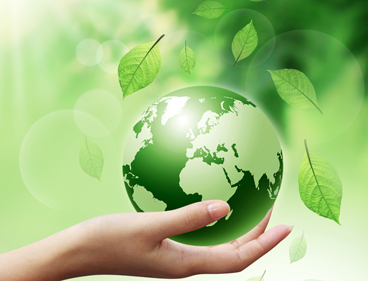Some of the City of Toronto’s efforts to reduce emissions
Jiaxing Huang SCIENCE & TECH EDITOR
Between 1750 and early 2017, the carbon dioxide concentration in the atmosphere increased 40%, from 280 ppm to 406 ppm. It has been estimated that if greenhouse gas emissions continue at the present rate, Earth’s surface temperature could exceed historical values as early as 2047. If this happens, ecosystems, biodiversity, and the livelihoods of people worldwide will experience a multitude of harmful effects.
Recent estimates suggest that if the current emissions trajectory continues, the Earth’s average temperature could increase 2°C by 2036. This value has been designated by the United Nations’ Intergovernmental Panel on Climate Change (IPCC) as the upper limit to avoid “dangerous” global warming.
According to the EDGAR database, created by the European Commission and the Netherlands Environmental Assessment Agency and released in 2015, Canada ranked 9th in the world in terms of carbon emissions, with China and the U.S. in 1st and 2nd place, respectively. From this, can we say that Canada has done a good job of reducing its greenhouse emissions?
Unfortunately, the answer is a resounding no. Although in terms of total greenhouse emissions, Canada seems to be quite low when compared to other countries, if we compare greenhouse emissions per capita, then the result is shocking. According to the list of countries by greenhouse emissions per capita published by the World Resources Institute in 2014, Canada ranked 11th, ahead of other developed countries such as the U.S. (ranked 14th), Germany (ranked 33rd), and Japan (ranked 35th). What that means is that Canada still has a long way to go toward reducing its greenhouse emissions.
As the largest city in Canada, Toronto has the power to assume an important role in reducing the country’s greenhouse emissions. Luckily, the municipal government fully understands this and has formulated a number of policies designed specifically to help Toronto reduce its carbon footprint.
Enwave and the Green Roof Bylaw are two of those policies. Enwave is the name of a company: Enwave Energy Corporation. This corporation is currently owned by Brookfield Asset Management and was formerly jointly owned by the City of Toronto municipal government and the Ontario Municipal Employees Retirement System under the name the Toronto District Heating Corporation. One of its great innovations has been the Deep Lake Water Cooling System that uses cold water from Lake Ontario to cool buildings in downtown Toronto, such as the Toronto-Dominion Centre, the Royal Bank Plaza, the RBC Centre, the Metro Toronto Convention Centre, and the Air Canada Centre. The system has enough power to cool 3 million m2of building space (equivalent to 100 buildings), and it is the largest renewable lake source cooling system of its kind in North America.
Enwave draws ice-cold 4°C water from a depth of 83 meters below the surface of Lake Ontario. Then, the cold water goes through Toronto’s John Street Pumping Station before it circulates around the buildings, taking away their heat and cooling them down. How- ever, the heated water from downtown is not returned directly to the lake — thus, the lake does not become polluted with a plume of waste heat.
The cooling system is a clean, renewable, and reliable energy source. Compared to traditional air-conditioning, Deep Lake Water Cooling reduces electricity use by 75% and will eliminate 40,000 tons of carbon dioxide — the equivalent of taking 8,000 cars o the streets.
In addition to the Deep Lake Water Cooling system, the City Council also passed the Green Roof Bylaw in May 2009, which required green roofs on new commercial, institutional, and residential developments with a minimum gross floor area of 2,000 m2 by January 31, 2010. Then, from April 30, 2012 onward, all new industrial developments had to be in compliance with this bylaw.
A “green roof” is one where vegetation like grasses, bushes, and even trees can grow. It has many advantages when compared to normal buildings, the most prominent one being its ability to take in carbon dioxide and thus reduce the city’s carbon footprint. Furthermore, according to a 2005 study by Brad Bass of the University of Toronto, Green Roof can also reduce a building’s heat loss and energy consumption during the winter, as well as prevent the building from absorbing too much heat in the summer, allowing it to save on electricity that would otherwise have had to be used for cooling.
While the City of Toronto has undertaken a number of other measures designed to reduce greenhouse emissions, efforts on the part of our government alone are not enough. Ordinary people like you and me also have to take up a similar responsibility if we want future generations to live in a cleaner and greener world.




